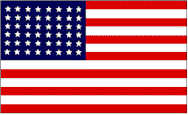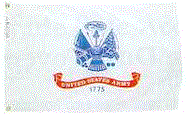

100th Anniversary of the Coast Artillery Corps
Fort Monroe, VA
October 6-7, 2007
On 6-7 October 2007, the Army Ground Forces Association (AGFA)
and the Coast Defense Study Group, in conjunction with Fort Monroe and the Casemate
Museum, hosted a Coast Artillery Living History event celebrating the 100th
Anniversary of the Coast Artillery Corps. The educational objective was to provide
interpretation of the Coast Artillery mission overall and at Fort Monroe specifically
from the founding of the Coast Artillery in 1907 through the Second World War.
The members of AGFA participating were Andy Bennett, Andy Grant, Mike Murray, Jonathan Prostak, Shawn Welch, Larry Winchell, Paul Taylor, Tom Minton, Curtis Saunders, Peter Morrill, Kieren Fletcher, Doug Houck, Vincent Turner, Roy Hatanaka, Mike Malone and Joe Janesic.
Local historians provided tremendous support. Monty and Adrian Winget supported
the event with their presence and two military vehicles - a WWII Jeep and a
1941 Dodge Command Car. Charles Felthausen added a 1st World War presence. Ken
Jones and his son Eric also joined us for the event.
The Coast Defense Study Group directly supported the event through participation
by members Phil Payette and Bolling Smith.
The Fort MacArthur Museum Association supported the event and was represented
by Joe Janesic, Roy Hatanaka, Mike Malone and Francisco Lacey.
Fort Monroe and the Casemate museum both supported and enabled the event. Paul
Morando (curator); Julie Hartzheim, Paul Rogers and Juanita Braddock from the
Directorate of Information (telephone cable support); Frank Pinion and Jennifer
Guerrero from the Directorate of Public Works; and Mike Leibolt Chief, Plans
and Operations Division were all critical to the success of the event.
A significant amount of work was done before the event. Cleaning Battery Irwin,
painting fixtures and displays, and assembling equipment occurred over several
months prior to the event. The work intensified two days before the event as
AGFA members began arriving at Fort Monroe and finalizing cleanups and assembling
displays.
The event had several stations. At Battery Irwin (2 x 3-inch M1902 rifles),
we set up ammunition displays in the magazine, telephone communications, an
Anti-Aircraft battery commander's instrument, and other ordnance related displays.
In the photo below Phil Payette, Andy Grant and Mike Malone are setting up displays.
Within the Casemate Museum, there were three main focal points: a fire control communications display, plotting room and presentations and discussion in the museum auditorium. The communications display was functional and on the Friday before the event we assembled the switchboard and power supply. Fort Monroe supported this fire control telephone network by supplying cable pairs between each of the stations and the Casemate Museum. This was a tremendous asset and enabled reliable and speedy activation of the fire control network. The power supply we assembled also greatly improved the performance of all the telephones. The power supply was built using excess repeating coils from the Fort Mott BD-74 fire control switchboard project. This power supply will support future events where a BD-74 is not present to power fire control telephones. Below, PVT Hatanaka and 2LT Taylor are connecting the power supply to the switchboard terminal.
One of the more exciting and technically demanding aspects to the event was the movement and assembly of the Casemate Museum's Warner-Swazey Depression Position Finder (DPF). This item, manufactured around 1910, weighed about 500 pounds complete with stand. We moved the stand and DPF separately. Below, 1ST Sgt Murray, PFC Minton, SGT Bennett and curator Paul Morando gently move the DPF proper.
Upcoming Events |
Past Events |
Order of Battle |
Contact Information |
Quartermaster |
Links |

